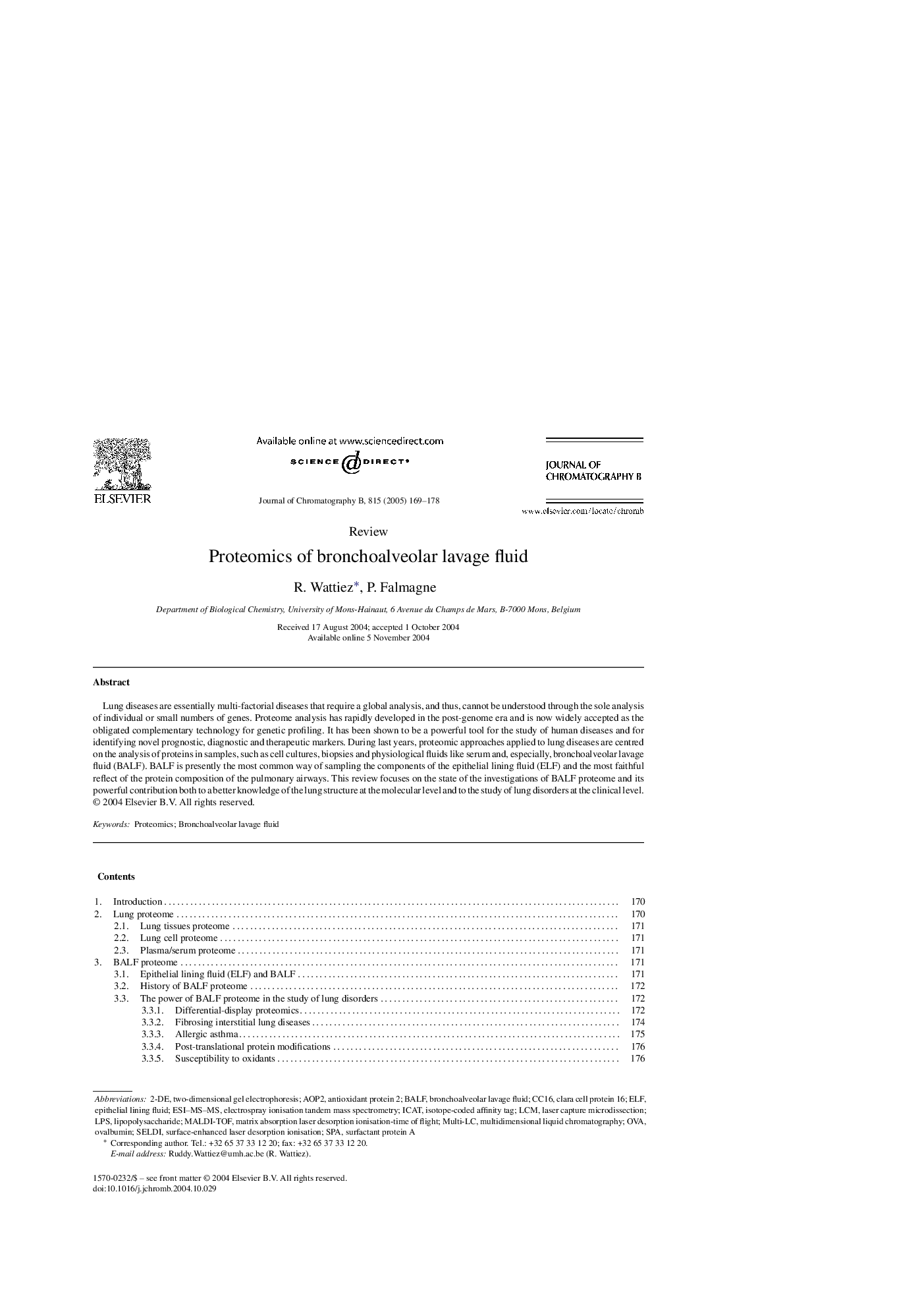| Article ID | Journal | Published Year | Pages | File Type |
|---|---|---|---|---|
| 9753402 | Journal of Chromatography B | 2005 | 10 Pages |
Abstract
Lung diseases are essentially multi-factorial diseases that require a global analysis, and thus, cannot be understood through the sole analysis of individual or small numbers of genes. Proteome analysis has rapidly developed in the post-genome era and is now widely accepted as the obligated complementary technology for genetic profiling. It has been shown to be a powerful tool for the study of human diseases and for identifying novel prognostic, diagnostic and therapeutic markers. During last years, proteomic approaches applied to lung diseases are centred on the analysis of proteins in samples, such as cell cultures, biopsies and physiological fluids like serum and, especially, bronchoalveolar lavage fluid (BALF). BALF is presently the most common way of sampling the components of the epithelial lining fluid (ELF) and the most faithful reflect of the protein composition of the pulmonary airways. This review focuses on the state of the investigations of BALF proteome and its powerful contribution both to a better knowledge of the lung structure at the molecular level and to the study of lung disorders at the clinical level.
Keywords
LPSElectrospray ionisation tandem mass spectrometryMALDI-TOFELFLCM2-DEICATOVACC16SPAtwo-dimensional gel electrophoresisOvalbuminBALFSELDIlaser capture microdissectionlipopolysaccharideEpithelial lining fluidBronchoalveolar lavage fluidisotope-coded affinity tagProteomicsSurfactant protein AClara cell protein 16Multidimensional liquid chromatography
Related Topics
Physical Sciences and Engineering
Chemistry
Analytical Chemistry
Authors
R. Wattiez, P. Falmagne,
